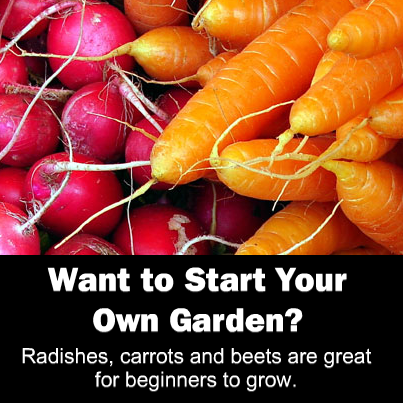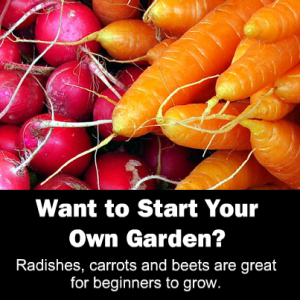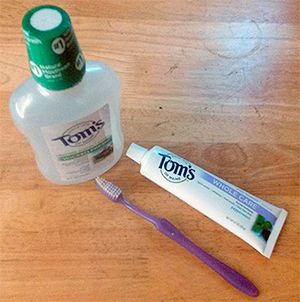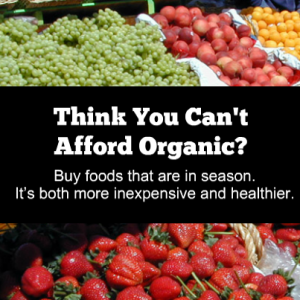 Sometimes living organically is just a matter of changing your perspective … or your buying habits. By changing when you buy certain foods (what season) or where you buy them (at a farmer’s market instead of the big-chain grocery store), and you may find that you are not only eating more healthy and nutritious food, but your are saving money on your grocery bill, as well!
Sometimes living organically is just a matter of changing your perspective … or your buying habits. By changing when you buy certain foods (what season) or where you buy them (at a farmer’s market instead of the big-chain grocery store), and you may find that you are not only eating more healthy and nutritious food, but your are saving money on your grocery bill, as well!
Here are five more tips in my Organic Living series that will help you creatively incorporate healthier food into your lifestyle.

 1. Buy better beef
1. Buy better beef
Not only do you want to pay attention to what you eat, but if you eat meat, you need to pay attention to what you eat eats, as well. Most “grass fed” beef are still grain finished. Grass-fed beef is more nutritious than grain-fed beef. For 100% grass fed beef, look for a local farm you can buy from. If you’d like information about buying local, grass-fed beef, check out You Can Afford Grass-Fed Beef! – The ultimate guide to saving money by eating high-quality, local meat.
2. Watch the Glycemic Index of your fruit.
Foods on high on the glycemic index (GI) put more sugar into your digestive track and blood stream. This can cause problems whether you’re healthy or have diabetes. And although fruit can be healthy, you want to monitor how much and what kinds you eat. Most fruits have quite a high GI. The exception are berries (including strawberries) which are low GI and very healthy. Here’s a quick list of the top 5 low glycemic fruits:
Low Glycemic Fresh Fruits
- Berries (an average of blueberries, strawberries, blackberries, raspberries) – 47 GI, 7g carbs and a glycemic load of 3
- 2 whole plums – 24 GI, 14g carbs and a glycemic load of 4
- 1 large peach – 28 GI, 14g carbs and a glycemic load of 4
- 1 slice of a large cantaloupe – 70 GI, 5g carbs and a glycemic load of 4
- 1 medium nectarine – 43 GI, 13g carbs and a glycemic load of 5
3. Shop smart for organic produce
It is a common myth that buying organic is more expensive. I know I’ve often thought, “I’ll buy organic when I make more money.” But this is often a fallacy. If you think you can’t afford organic, try buying foods that are in season. It’s both more inexpensive and healthier. You can find all sorts of inexpensive, fresh and organic produce at your local farmers market.
4. Store food for out of season
Have a favorite seasonal food? Buy it when it’s in season, then freeze it or can it. It’s healthier than buying it out of season. Foods being sold out of season can have a number of things going against them:
- They traveled farther to get to you.
- They were stored longer.
- They many have been treated in order to survive the longer travel and storage time.
All this leads to lower nutritional value of the product, and sometimes an increase in unhealthful qualities, as well.
5. Be careful with seafood.
Eating fish used to be a pretty healthy way to go. However, the aquatic and marine environments are becoming less and less ideal with increasing pollution. There are two ways you can get around this:
- Don’t need fish too often, and
- Avoid large fish like tuna.
Large fish eat small fish and build up higher concentrations of mercury.
Missed previous posts in this Organic Living series? Check them out here!
[divider]
[one_third]  [/one_third]
[/one_third]
[two_third_last]
Take Charge of Your Health!
Changing your eating habits can be tough. But it doesn’t have to be if you take a little time to think it out and create a plan.
This Healthy Eating Worksheet will walk you through the process of creating a healthy eating plan. All you need to do is print it out, set aside some time to complete it, and then fill it out. Then you can create your plan, knowing that you have addressed potential obstacles and came up with some creative ways to handle them.
 [/two_third_last]
[/two_third_last]

 [/one_third]
[/one_third]


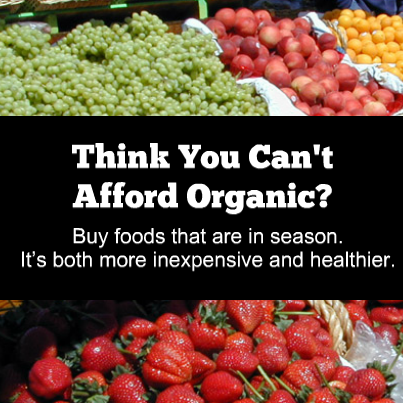
 Sometimes living organically is just a matter of changing your perspective … or your buying habits. By changing when you buy certain foods (what season) or where you buy them (at a farmer’s market instead of the big-chain grocery store), and you may find that you are not only eating more healthy and nutritious food, but your are saving money on your grocery bill, as well!
Sometimes living organically is just a matter of changing your perspective … or your buying habits. By changing when you buy certain foods (what season) or where you buy them (at a farmer’s market instead of the big-chain grocery store), and you may find that you are not only eating more healthy and nutritious food, but your are saving money on your grocery bill, as well!
